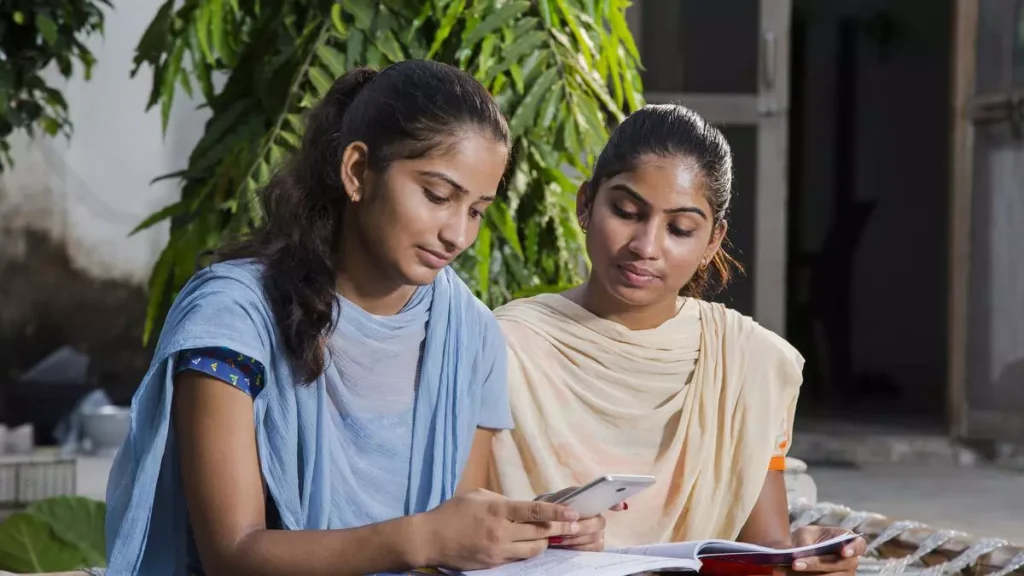Context:
Recently, The Annual Status of Education Report (ASER) report released by Pratham (an NGO) which focused on capturing the viewpoints of rural students aged 14 to 18 years.
Key Finding of Report
1. Youth Engagement Profile (Ages 14-18)
Enrollment:
- Overall, 86.8% of 14-18-year-olds are enrolled in educational institutions.
- Age-based differences are notable, with 3.9% non-enrollment for 14-year-olds and 32.6% for 18-year-olds.
Stream Preferences:
- A majority in this age group opt for the Arts/Humanities stream, especially in Std XI or higher (55.7%).
- Notable disparity in STEM stream enrollment, with 36.3% of males and 28.1% of females choosing it.
Vocational Training:
- Only 5.6% of surveyed youth are pursuing vocational training or related courses.
- College-level youth, particularly, engage in vocational training (16.2%), often opting for short-duration courses.
Work Engagement:
- A higher percentage of males (40.3%) than females (28%) engage in activities other than household work for at least 15 days in the preceding month.
- Across genders, youth involved in non-household work predominantly contribute to family farms.
2. Youth Ability
Foundational skills for youth in the age group of 14-18
- Around 25% of youth in this age bracket struggle with fluent reading of a Std II level text in their regional language.
- More than half encounter difficulties with 3-digit by 1-digit division problems; only 43.3% perform correctly, an expectation for Std III/IV.
- Approximately 57.3% exhibit proficiency in reading sentences in English, and 73.5% understand their meanings.
Reading and Understanding Written Instructions – Daily Life Applications:
- Among youth capable of reading at least a Std I level text, about two-thirds can answer at least 3 out of 4 questions based on an O.R.S. packet.
Financial Calculations:
- Youths proficient in at least subtraction on the ASER arithmetic test were evaluated on commonplace financial calculations.
- Over 60% of those capable of subtraction or more can manage a budget, about 37% can apply a discount, but only about 10% can calculate repayment.
3. Digital Awareness and Skills
Digital Access:
- Nearly 90% of youth have a smartphone at home and possess the knowledge to use it.
- Males are more than twice as likely to own their smartphone compared to females (43.7% vs. 19.8%).
- Females exhibit lower proficiency in using smartphones or computers compared to males.
Communication and Online Safety:
- Approximately 90.5% of youth report using social media, with a slightly higher proportion among males (93.4%) than females (87.8%).
- Only about half of social media users are familiar with online safety settings, with males more likely to be aware than females.
Services and Entertainment:
- Slightly over a quarter of all youth use smartphones for accessing online services, including making payments, filling forms, paying bills, or booking tickets.
- Close to 80% of youth utilize smartphones for entertainment activities like watching movies or listening to music during the reference week.
Digital tasks (done on a smartphone in the presence of the survey team):
- Males (72.9%) were more likely to provide a smartphone compared to females (62%).
- Of those with smartphones, about 80% can find and share specific YouTube videos, 70% can browse the internet to find answers, and two-thirds can set alarms.
Reasons for Decline
Enrollment Decline:
- Early marriage and family responsibilities, especially for girls.
- Limited access to or poor quality of higher secondary education.
Stream Preferences:
- Perception of STEM subjects as difficult and less relevant to rural life.
- Limited access to qualified STEM teachers and resources in rural schools.
Limited Vocational Training:
- Lack of awareness about available vocational training programs.
- Limited access to quality vocational training facilities in rural areas.
Gender Gap in Access and Proficiency:
- Digital divide and limited access to smartphones and internet connectivity for girls.
- Lack of digital literacy training and awareness programs targeting girls specifically.
Limited Online Safety Awareness:
- Lack of education and awareness about online threats and scams.
- Inadequate measures for online safety within schools and communities.
Government measures in India:
The Right of Children to Free and Compulsory Education (RTE) Act, 2009:
- It enacted under Article 21-A, guarantees every child the right to quality elementary education in a formal school.
- Guarantees free and compulsory education to all children aged 6-14 years.
National Policy for Skill Development and Entrepreneurship 2015:
- Key objectives include bridging the gap between employer requirements and workforce skills, making vocational training aspirational, integrating it with formal education from Std IX, establishing an IT-based information system, promoting national standards, and encouraging states to set up new training centers.
- It emphasizes gender sensitivity and promotes skilling women in non-traditional roles.
Pradhan Mantri Gramin Digital Saksharta Abhiyan (PMGDISHA) 2017:
- It strives for universal digital literacy in rural India, aligning with the broader vision of a digitally empowered society and knowledge economy.
National Education Policy (NEP) 2020:
- NEP 2020 envisions a holistic and inclusive education system with a focus on flexibility, vocational training, technology integration, and eliminating digital disparities.
- NEP outlines the vision for education in India, designating ages 14-18 as the ‘secondary stage.’
Pradhan Mantri Kaushal Vikas Yojana (PMKVY) Guidelines 4.0, 2023:
- Promotes skill development through free short-duration training and monetary rewards for certification. It targets individuals aged 15-45, It focuses on fresh skilling, re-skilling/upskilling, and marginalized groups.
Draft National Youth Policy, Ministry of Youth Affairs and Sports, 2023:
- It aims to synergize the aspirations of India’s youth (15-29 years old) for harmonious societal growth.
- Emphasizes improving the quality of education, healthcare, livelihoods, and skills for youth.

